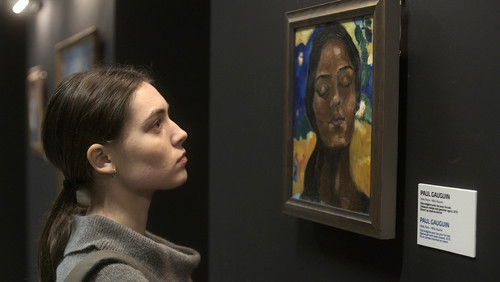Harbor Drift (1929)
39KHarbor Drift (1929). 54m
“During the twenties of the last century, the Weimar Republic was beset by continuous social and political conflicts. Demonstrations and riots were common and were staged by all political factions: the right, ultra conservatives, socialists and communists. This was the result of out of control inflation and high unemployment.u003cbr/u003eu003cbr/u003eDuring those troubled times, an important new film company was created; the u0026quot;Prometheus Film-Verleih und Vertriebs GmbHu0026quot; (1926-1931) . This was the work of the German communist party and the films were clearly influenced by the revolutionary Soviet films of that epoch. The company was also a reaction against the more conventional, and during the last twenties, more conservative UFA silent productions. u0026quot;Prometheusu0026quot; was a very active and combative film company that produced a few very remarkable proletarian silent oeuvres wherein those Weimar political and social troublesome times were reflected.u003cbr/u003eu003cbr/u003eu0026quot;Jenseits der Stasse: Eine Tragödie des Alltagsu0026quot; ( Harbor Drift: A Tragedy of Everyday Lifeu0026quot;) (1929) was one of them and for this German count it is one of the best silent films produced by the u0026quot;Prometheusu0026quot; film collective. The tragedy of the unemployment in Deutschland and the deplorable situation that this caused in the population, is superbly depicted.u003cbr/u003eu003cbr/u003eThe film tells the story of an old beggar ( Herr Paul Rehkopf ) and an unemployed young man ( Herr Fritz Genschow ). They meet each other while wandering through suburbia and their lives will change drastically when a woman loses a valuable necklace in the crowded city streets. The beggar picks up the jewel and this is witnessed by a nearby prostitute ( Frau Lissy Arna ). The finding of the necklace is not necessarily good luck for the beggar.u003cbr/u003eu003cbr/u003eThe film is a sad portrait of those grim, depressing times and accurately reports those deplorable conditions suffered by the German people. However, in comparison with other film productions of that film collective company, u0026quot;Jenseits der Strasse u0026quot; has a careful aesthetic.u003cbr/u003eu003cbr/u003eThe film was directed by Herr Leo Mittler who, since he was actor before becoming a director, was well acquainted with acting technique and draws excellent performances from his three leads that create convincing social portraits of individuals forced to live in dire conditions in the most sordid part of the city.u003cbr/u003eu003cbr/u003eThe rhythm and the movement of the city street sequences are accelerated, frantic and very modern; artistic shots filmed from various angles capture the rush and atmosphere of the crowded streets and there is the rapid editing that was so characteristic of the very influential revolutionary Soviet silent films.u003cbr/u003eu003cbr/u003eIn contrast with the rush of the city, the film has also industrial shots of the city harbour ( those scenes were shot in Hamburg exteriors ) where the young man tries in vain to find a job. This gives a documentary feel to the film which of course suits its social themes (real people looking for work are shown in these scenes). At the same time, there are dizzying, shining and fascinating scenes that stand in counterpoint to the darkness the characters experience. The desperation of the beggar, jobless man and the prostitute are symbolic of the situation in Germany. These three characters will do anything to get the necklace even at the cost of compassion and self respect. Likewise the beleaguered citizens of Germany will do anything they have to do in order to survive even if the most desperate means bring only temporary relief.u003cbr/u003eu003cbr/u003eAnd now, if youu0026#39;ll allow me, I must temporarily take my leave because this German Count must buy a necklace for one of his Teutonic heiress.”









